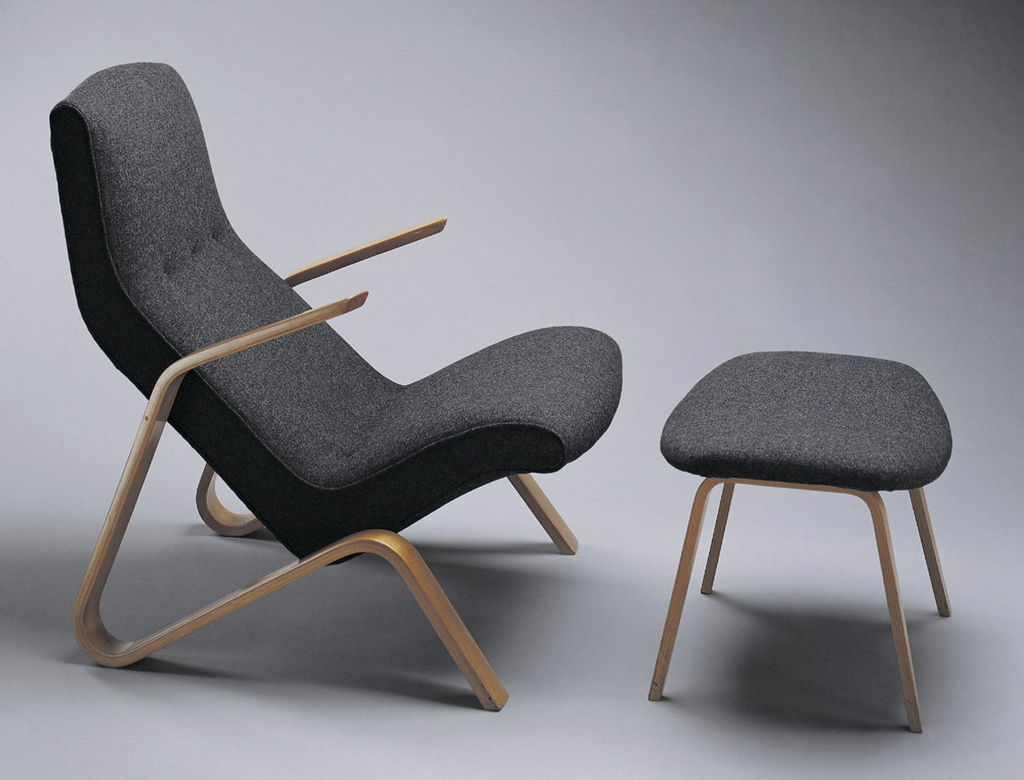Architect and designer, Eero Saarinen, was born in Finland and immigrated to the US with his family in 1923 when he was thirteen years old. His father, Eliel Saarinen (1873-1950), was also an architect and the founding director of the Cranbrook Academy of Art in Michigan. His students included Charles and Ray Eames, Florence Schust (later Knoll), and Harry Bertoia. Eero’s mother, Louise Gesellius, was a textile designer and sculptor. Eero studied sculpture and furniture design at Cranbrook, learning from his renowned father that design should encompass a “total environment”—landscapes, buildings, furniture, and interior decoration. After his time at Cranbrook, Eero studied sculpture in Paris and returned to the US to complete his studies at the Yale School of Architecture (1934). Starting in 1936, Saarinen worked with his father, both in his architecture firm and as an instructor at Cranbrook, collaborating with Charles and Ray Eames, and Florence Schust. As a designer, Saarinen developed several new furniture forms with Eames, including innovative designs for furniture molded from laminated wood.
In 1946 Knoll Associates (Hans and Florence Knoll) started collaborating with Eero as a designer since he and Florence remained in touch after their time at Cranbrook. Saarinen created many iconic furniture designs for Knoll, several of which are in Cooper-Hewitt’s collection. However, few today seem to be aware of his first sculptural lounge chair for Knoll, the Model 61, also known as the Grasshopper chair, designed in 1946. The curved, organic style of the chair’s bentwood arm-leg reminded Saarinen of the beloved grasshopper’s hind legs, hence the chair’s charming name. It was created for comfort and lounging with its curved, upholstered back flowing into a deep angled seat. It also had a modernist and highly stylistic appeal, especially for 1946. The continuous arm and leg elements are made of bent laminated wood, a relatively new, light yet strong material utilized particularly for aviation during World War II. This new material was adapted for post-war furniture manufacture, especially since a number of more traditional materials were still scarce in the years immediately after the war.
The Grasshopper chair was not a huge success for Knoll, and it did not become an iconic mid-twentieth century design. However, it was steadily produced for nineteen years, from 1946 to 1965, and is back in production today. Throughout his career, Saarinen explored new materials and began using fiberglass, aluminum and plastic to create what became his more iconic pieces, such as the Womb chair and the Tulip chair, both of which eclipsed the Grasshopper. I personally can’t wait for an opportunity to view Cooper-Hewitt’s Grasshopper chair in the Museum’s renovated galleries, slated to reopen later this year.
